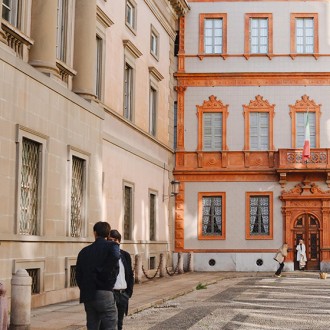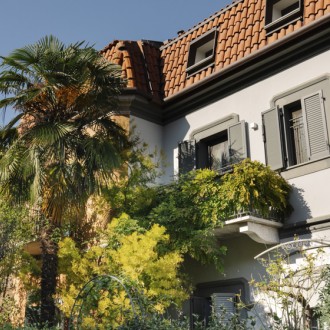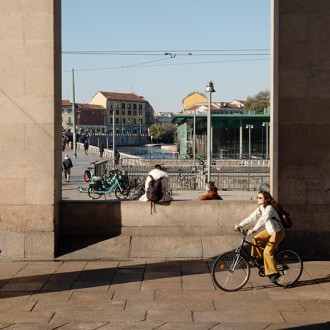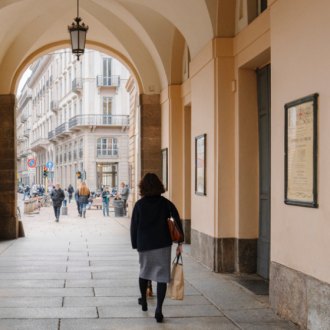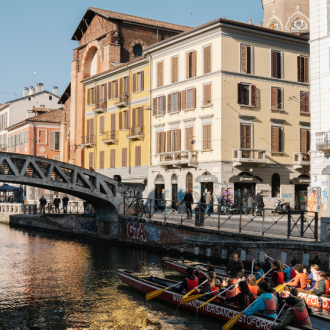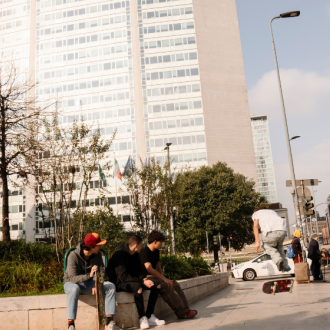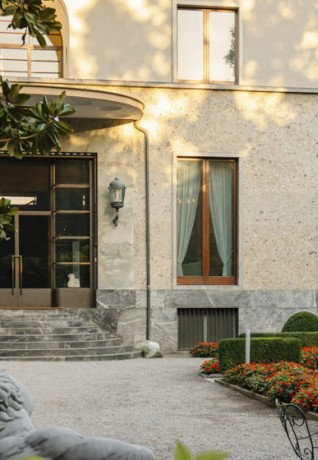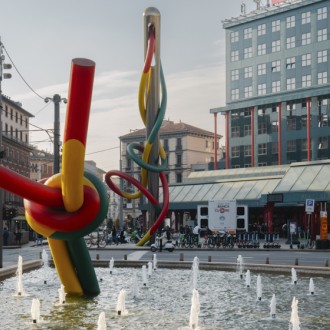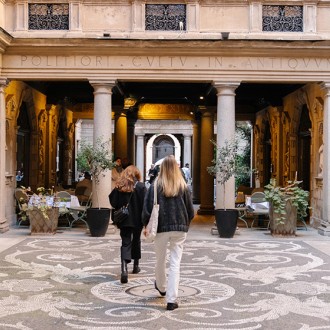LIBERTY-STYLE MILANO
The elegance of an Art Nouveau heritage
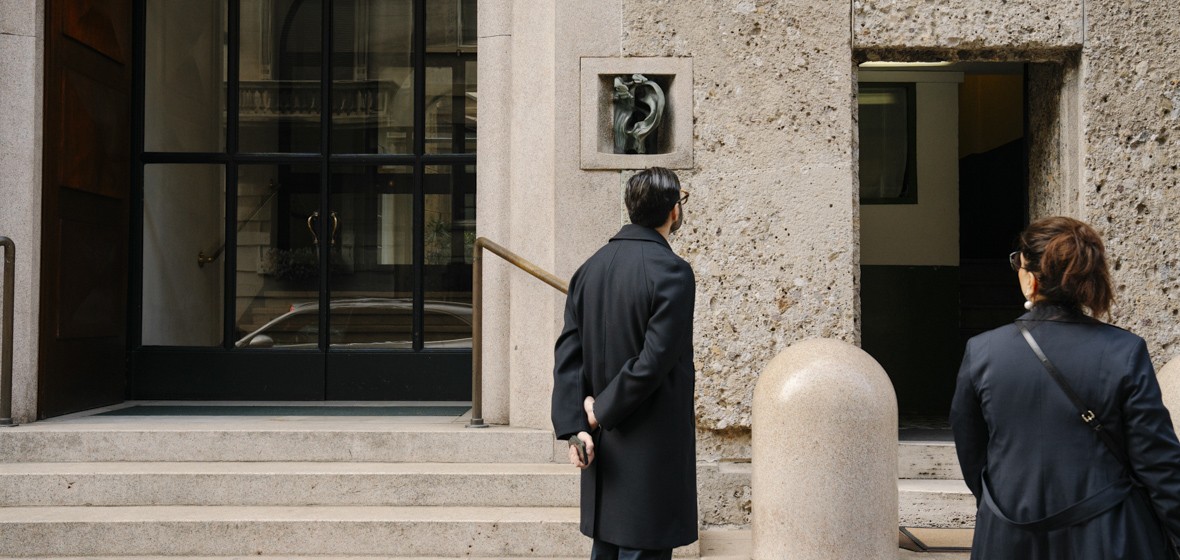
Like many other European capitals, in the late 1800s and early 1900s, Milano embraced a new architectural movement characterized by graceful lines and fluid shapes. This elegant style, known as Art Nouveau or Liberty, left an indelible mark on the city’s landscape. To explore this captivating era, we invite you to take a delightful journey through the vibrant district of Porta Venezia. Renowned for its shopping, diversity, inclusivity, museums, nightlife, and exquisite architecture, this neighborhood holds a treasure trove of Art Nouveau gems documented in the book “Il liberty a Milano”.
Our first stop takes us to Casa Galimberti. With its façade fully decorated with ceramic-painted images and wrought iron balconies, this private house is a must-see stop. The building is not open to the public, but you can admire it from the outside. Just a stone’s throw from here, you’ll find Fondazione Rovati, a cultural institution hosting contemporary and Etruscan art mixed in a very interesting and enticing way.
Our journey continues to Palazzo Castiglioni, one of the city’s first Liberty-style buildings that caused quite a scandal upon its inauguration. This ground-breaking architectural marvel was indeed known as “Ca’ delle chiappe” (house of the buttocks): at that time, two statues placed right next to the large entrance portal depicted naked women showing their bums, representing an allegory of peace and industry. After numerous complaints by the inhabitants, the architect was forced to remove them and insert floral motifs in their place. Like many other Liberty-style buildings around the city, it is today a private house and not open to the public. Just nearby, you can find GAM, the city’s modern art gallery, the PAC, the contemporary art pavilion, but also the “two quadrangles”: the fashion district (Quadrilatero della Moda) for shopping lovers, and the silence district (Quadrilatero del Silenzio) to dive in the most refined residential area of the city.
Prepare to be enchanted by Palazzo Berri-Meregalli, an example of the final years of Milanese Liberty. Its curious and bizarre appearance with dark bricks, gold decorations, and colored tiles inevitably catches everybody’s attention. Its hall is adorned with intricate mosaics and sculptures that will leave you in awe. Today, it hosts private residences and offices, but if you pass by during weekdays when the gatehouse is open, you will be able to peek at the lobby. The most eccentric piece is the Vittoria Alata statue (winged victory) by Adolfo Wildt.
Casa Sola-Brusca is a noteworthy stop for its extravagant feature by the front door: the first intercom system in Milano, cleverly shaped like an ear! This unique and pioneering innovation for its time earned the building the nickname “Ca’ dell’orègia” (home with an ear). It’s a private house and the intercom is no longer in use, but it is still on display for passers-by.
Our final destination leads us to Casa Ferrario, an eclectic private building and one of the first examples of Milanese Art Noveau, decorated with elegant railings in wrought iron of botanical motifs and delicate butterflies. We are in via Spadari, where locals and tourists as well can enjoy the city’s best delis, ice cream shops, cafes, and restaurants.
Initiative created thanks to the resources of the Development and Cohesion Plan of the Italian Ministry of Tourism "Piano di Sviluppo e Coesione del Ministero del Turismo"

 Log in
Log in


